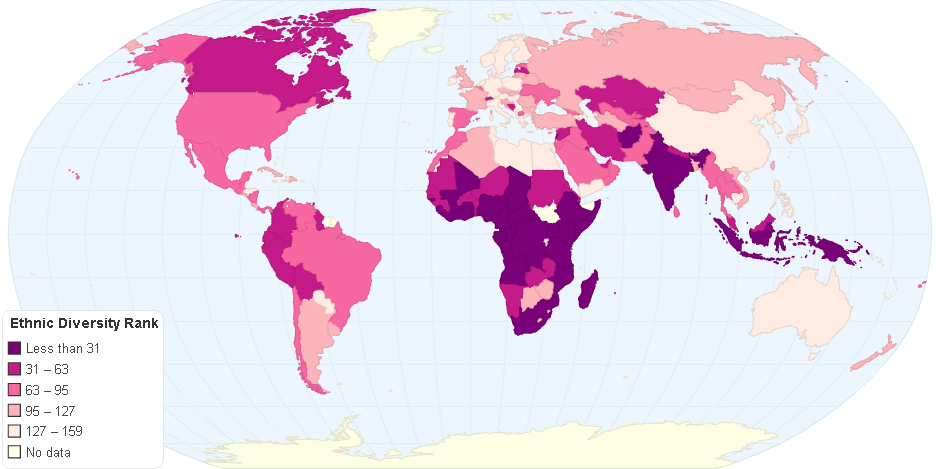This chart shows Ethnic and Cultural diversity Index.
The lists are commonly used in Economics literature to compare the levels of ethnic, cultural, linguistic and religious fractionalization in different countries. Fractionalization measures are computing the probability that two randomly drawn individuals are not from the same group.
cultural fractionalization is approximated by a measure of similarity between languages, varying from 1 = the population speaks two or more unrelated languages to 0 = the entire population speaks the same language. This index of cultural diversity is biased towards linguistic variations as opposed to genetic diversity and other variations.
Cultural diversity is the quality of diverse or different cultures, as opposed to monoculture, the global monoculture, or a homogenization of cultures, akin to cultural decay. The phrase cultural diversity can also refer to having different cultures respect each other's differences. The phrase "cultural diversity" is also sometimes used to mean the variety of human societies or cultures in a specific region, or in the world as a whole.
An ethnic group or ethnicity is a category of people who identify with each other based on common language, ancestral, social, cultural, or national experiences.Unlike most other social groups, ethnicity is primarily an inherited status. Membership of an ethnic group tends to be defined by a shared cultural heritage, ancestry, origin myth, history, homeland, language or dialect, symbolic systems.
9 years ago

